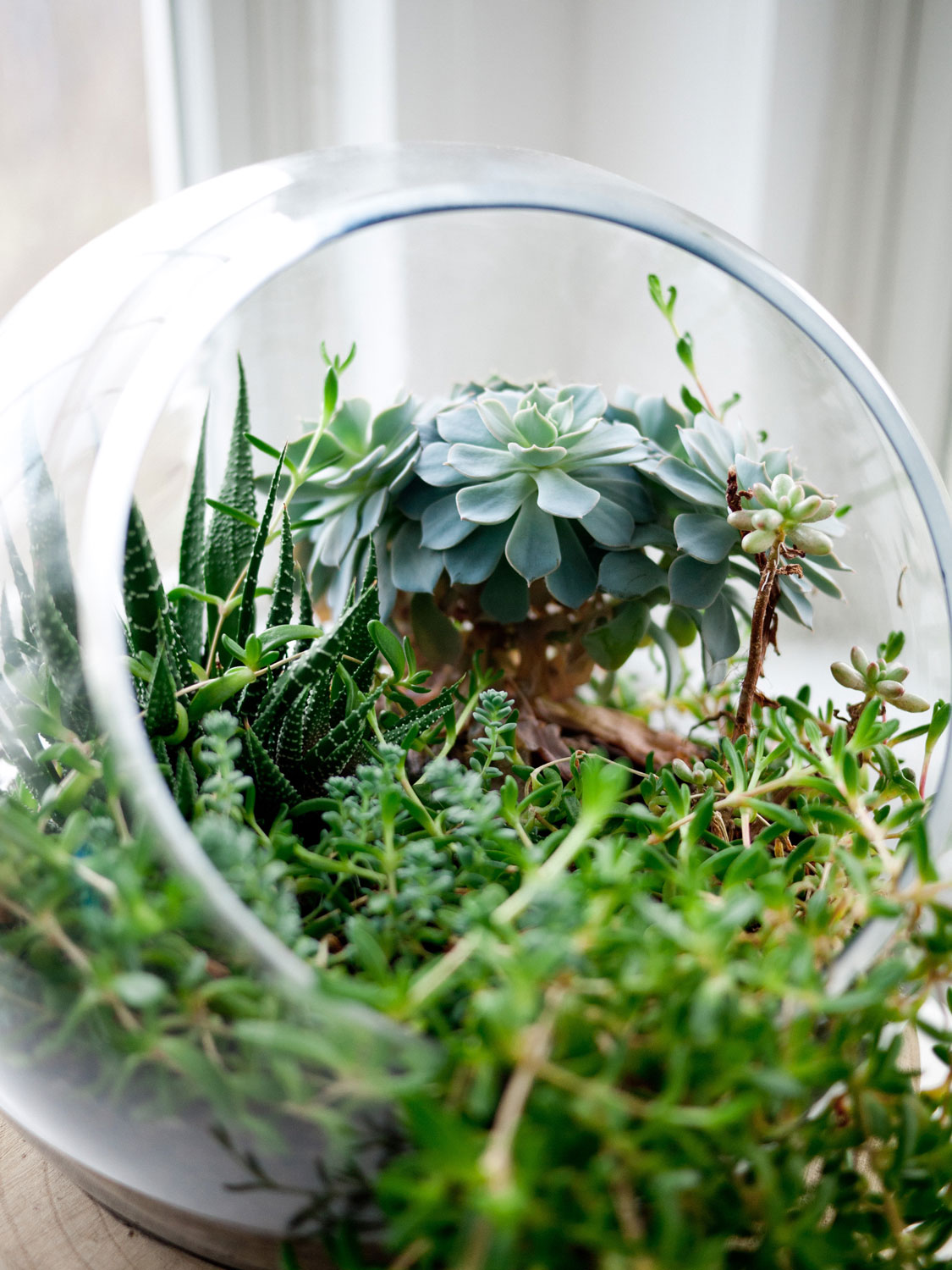Turn old glass jars and containers into stylish pint-sized terrariums
WHY YOU SHOULD TRY IT
The best thing about these bottled terrariums is that they’re low maintenance – perfect for people who forget to water their pot plants.
HOW TO MAKE YOUR OWN LILLIPUTIAN ECOSYSTEM
What you need
- A clear glass jar or bottle, preferably with a lid (open containers dry out easier).
- Small plants or seeds (herbs, veggies or any other seeds).
- Potting soil.
- Peat (sphagnum) moss.
- Small pebbles for drainage.
- Activated charcoal (you can buy it from a pet store) or horticultural charcoal.
- Tools (an old tablespoon and fork works best)
Choose a theme
Here are a few ideas to help you choose a theme for your mini terrarium:
- Tropical: The houseplant section of your local nursery is a great source for your tropical terrarium. Crotons and bromeliads make a splashy statement. Add frothy ferns for a lush, layered look. Most tropical plants prefer partial shade, so don’t place them in a sunny window.
- Woodland: Choose a collection of mini ferns and a single mini orchid. Woodland plants also usually prefer partial shade.
- Succulent: Use a mix of round-leafed sedum, echeveria and rock roses (or any succulents you like). These plants require little water and full sun.
Tips
- For a multi-plant display, select plants with the same temperature, light and water requirements. Choose slow-growing plants so your terrarium doesn’t get overgrown.
- Don’t overcrowd your terrarium; it’ll have more visual impact and your plants will be healthier if you keep it simple. Think of aspects like leaf texture, colour and height, as you would when planning a plant border.
HOW TO CREATE YOUR TERRARIUM
.jpg)
Image source: designscapescolorado.com
1. Add a base layer of small pebbles for drainage.
2. Add about 3cm of activated charcoal. This will help keep the closed environment clean.
3. Cover the charcoal with about 3cm of peat moss. This moss blanket will separate your soil from the water accumulating in the pebbles. It’ll also prevent root rot and keep the soil healthy.
4. Slowly fill the bottom third with potting soil.
5. For seeds: Sow the seeds as you would in a seed tray.
For plants: Make a hole in the soil; it should be deep enough to keep the plant from toppling over. Pop the plant into the hole; once you have the plant in place, use a spoon to gently shovel soil around it and tamp it down firmly.
6. Add a little peat moss to round off the look.
7. Water before closing it up so that it’s moist.
CARING FOR YOUR TERRARIUM
- Because your bottle terrarium is a closed ecosystem it can be water- and light- sensitive. If it gets too much sunlight, it can become a hothouse and literally bake your plants.
- Pay attention to moisture levels. It should form a nice layer of condensation inside the bottle. This will slowly rain down on the plants (a lot like a rainforest).
- Terrariums by design are humid environments, but if it’s too wet inside, leave the top open for a day or so.
- If the moisture is right, you won’t need to water it more than once a month (depending on how many plants there are and how much water they need).
- You shouldn’t add any liquid or solid fertilisers to your terrarium. What you want is very slow or no growth from your plants. They’re almost in a state of suspended animation. If they’re fertilised, they could very quickly grow too large and fill up your bottle.
Decor tip: Cover your terrarium with a glass cloche to make a stylish centrepiece.
 Image source: flickr.com
Image source: flickr.com
THE AIR UP THERE
If you don’t want to get your hands dirty, you can always opt for this cool air plant (tillandsia) display. We love the way the leaves protrude from the glass containers Image source: theinspiredroom.net
Image source: theinspiredroom.net


